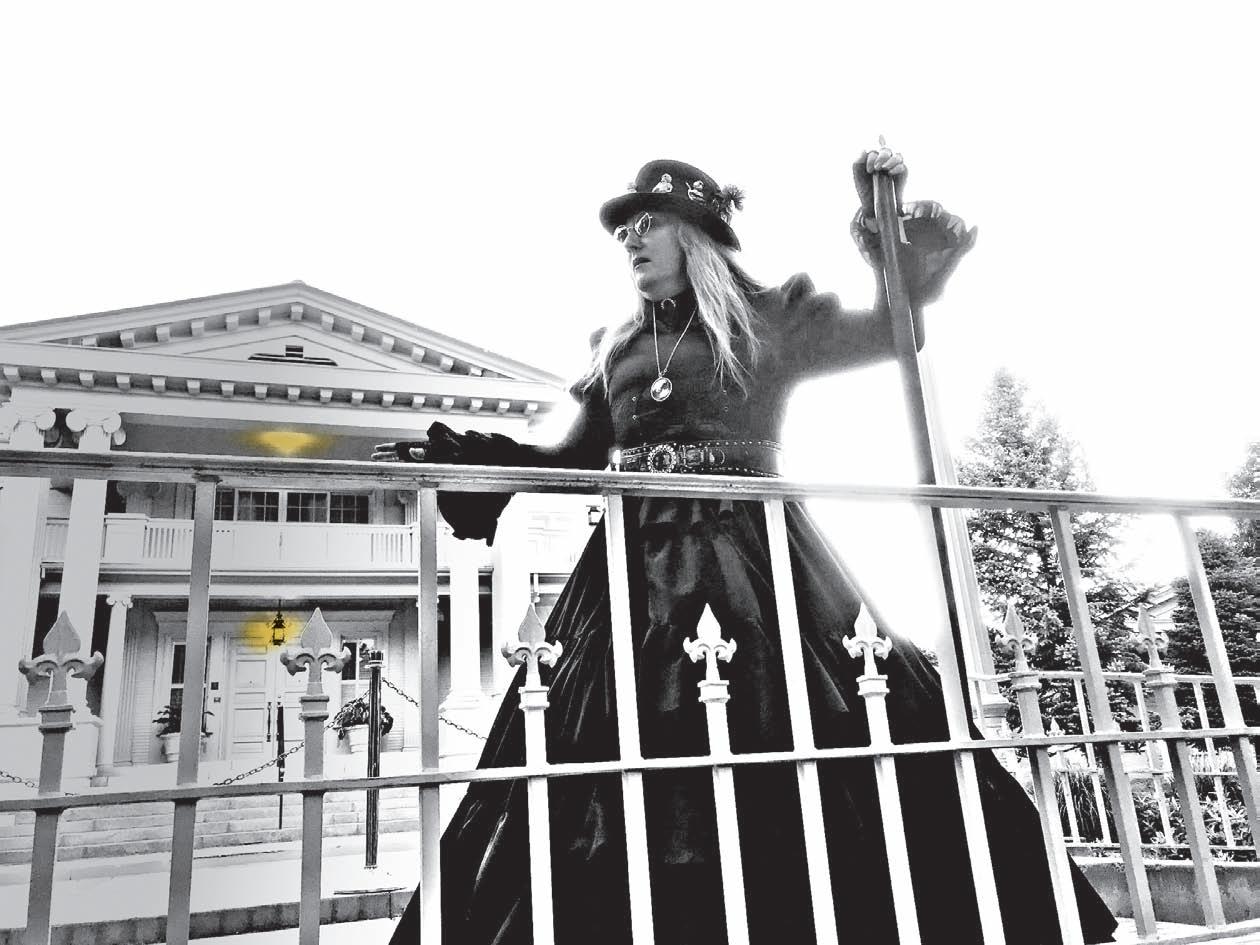
17 minute read
a&c
from July 3, 2019
A spIrIted stroll
by Jessica Santina
Advertisement
Mary Bennett has been leading ghost walks for nearly a decade now. It’s still hot and sunny in the late evening in downtown Carson City. But as the group of us make our way west uphill on West Robinson Street, with its stately old mansions and mature trees, the cacophony of sounds from the Brew Fest at McFadden Plaza, an outdoor concert at Brewery Arts Center, and a variety of backyard and sidewalk gatherings fades away behind us.
Our climb up the hill is steady and requires our concentration. The only sounds are the trees rustling in the breeze, our trudging footsteps and reverential murmurs among our group. The sunlight fights its way through the thick canopy of leaves overhead, but darkness encroaches. Here, in the oldest part of one of the
Carson City Ghost Walks bring local haunts alive
West’s most notorious haunted places, it’s easy—and fun— to let our imaginations run wild. That’s what Mary Bennett, a.k.a. Madame Curry, is hoping for.
History comes alive
Bennett, producing artistic director of Reno’s Brüka Theatre, has played the role of Madame Curry, the leader of the Carson City Ghost Walk, for almost 10 years. Dressed in a black satin gown over a corset and hoopskirt, Madame Curry, wife of Carson City founder Abraham Curry, takes participants on a 90-minute stroll past some of Carson City’s earliest haunts while she spins yarns—some educational, some bizarre and some downright spooky—about life in the mid- to-late 1800s during the capital city’s infancy.
Now in their 27th season, the ghost walks, Bennett explains, were the brainchild of Mary Walker, former Carson City finance and redevelopment director, who visited Boston and walked the Freedom Trail. Inspired by that walking tour of historic Colonial places, led by tour guides in period costumes, Walker returned to Carson City and proposed a similar, Wild West-themed tour of historic sites in Carson City, which turned into the 2.5-mile “Blue Line” Kit Carson Trail. The idea was a hit, and, before long, themed historic tours, including daytime
Photo/Dave Santina ghost walks, were drawing participants from around Northern Nevada.
A reporter at the time, Bennett walked the trail and wrote about the experience. Walker and Candy Duncan, who was at the time executive director of the Carson City Convention and Visitors Bureau, knew Bennett as both a journalist and an actress with a penchant for history, and they approached her about becoming creative director for the ghost walks. Bennett eagerly agreed, and she began developing themes, writing scripts and hiring actors to play some of the characters described on the walks—living and dead.
“Almost 10 years ago, the city made the decision not to run them anymore, and because I’d done it and loved it, I approached my daughter Bailey about us running it privately,” Bennett says. “We’d utilize Brüka for actors and some of the resources like props and costuming, and Bailey said yes, so we took it on and expanded into doing evening tours.”
Now a family business that involves Bennett’s four children and her grandchildren, Carson City Ghost Walk also relies on a cohort of volunteers from area schools and community members, as well as members of the Brüka family, all working together to support what Bennett calls “a heart passion.”
The ghost walk is an ever-evolving tour that takes participants past historic sites and homes, including the Governor’s Mansion, Bliss Mansion, Ferris Mansion and Rinckel Mansion. Summer evening walks, which take place on about three Saturdays a month between Memorial Day weekend and October, are narrative and feature character-driven stories. Come October, the spookiest time of year, the walks ramp up to feature themes, tours inside homes and dramatized stories.
“I’ll populate the walk with actors and characters that come from a story to link throughout the tour,” Bennett explains. “Sometimes we’ll do two tours, one longer one with up to five houses that we can go inside, thanks to their kind residents, and then we’ll do a smaller tour that’s shorter, for people who aren’t able to walk as far, and is more family-oriented, with a bit more of an old-fashioned trick-or-treat element, but I still bring in the history.”
Bennett says the goal, really, is to get people excited about history. “Overall, we try to get people to understand the intention of Abraham Curry, how he wanted all the houses in Carson City to be built with the doors facing the capitol, in order to create this sense of community, and how that has really remained. I like to enhance and tell those stories,” she said.
Ghost stories
Madame Curry and her Spirit Wranglers—Bailey and her three young children, who all bring up the rear of the tour and treat participants to drinks and conversation—impart fascinating stories of the intriguing and so-crazy-they-must-be-true original residents of Carson City, from visionary Curry himself to George Ferris, Jr., inventor of the Ferris Wheel; to Orion Clemens, first and only territorial secretary of Nevada and brother of author Samuel Clemens (Mark Twain); to Major William Matthew Ormsby, who was killed leading a vigilante force against Paiute Indians in the Pyramid Lake War; to Alfred Chartz, a local attorney convicted of murder whose house is the stuff of nightmares; and many more.
“It truly is 27 years’ worth of story gathering,” Bennett says about the origins of the wealth of information and storytelling. “A lot of it is from the library. I used to go do a summer trip every year and spend a full day at the Nevada State Library, looking through old newspapers—old copies of the Nevada Appeal and Territorial Enterprise. I also use books found at the Nevada State Museum and the Visitors Center. I’m constantly picking up new books. I try to read as much as I can so I have a base of history, but also, depending on the group or day, the ability to keep it fresh and tie in new information.”
Woven into the historic anecdotes are numerous tales of ghost sightings and unexplained encounters, which Madame Curry relates with relish and which are enough, on this breezy, darkening summer evening, to raise the hairs on the back of my neck and cause my 10-year-old daughter to snuggle up next to me as she listens and whisper in my ear, “Is that real?”
Well, is it? Bennett says many of the ghost stories come from residents who have stayed or lived there, and others come from peculiar encounters she herself had while working at the Rinckel Mansion, which is now home to the Nevada Press Association, or when she lived in an apartment near the Washoe Club in Virginia City. One of Bennett’s favorite things about the walks is afterward, when she bids her guests goodnight and they linger to relate their own stories of mysterious happenings. “I think we’ve all had things that feel like coincidences, or like someone’s trying to remind us that they’re there,” she reflects. “It’s the senses being awakened. Maybe pictures are falling down, or there’s a smell. A spirit won’t tap us on the shoulder and say, ‘Hey, I want to talk to you,’ but we have those reminders, that energy around us. … I think it’s up to the individual person to determine what that is. So it’s really important at the ghost walks for us to share memories and think about experiences—not to create bizarre illusions, but to open people’s hearts and minds.” □
“I think we’ve all had things that feel like coincidences, or like someone’s trying to remind us that they’re there. It’s the senses being awakened.” Mary Bennett Carson City Ghost Walks For tickets or more information about the Carson City Ghost Walks, visit www.carsoncityghostwalk.com.
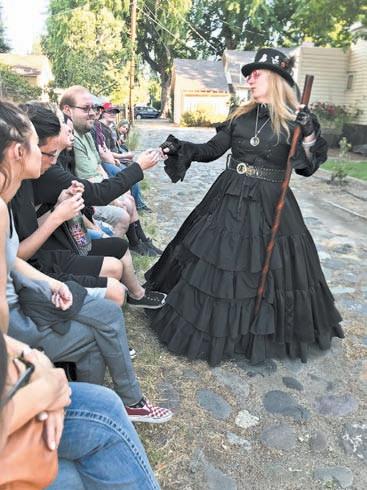
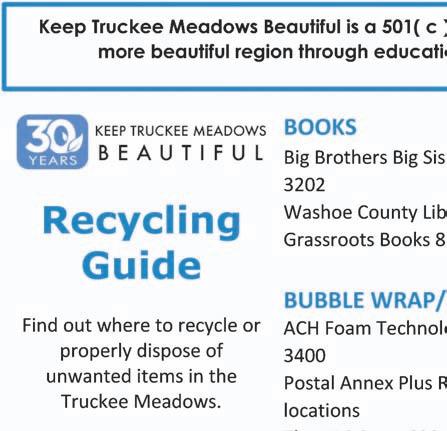
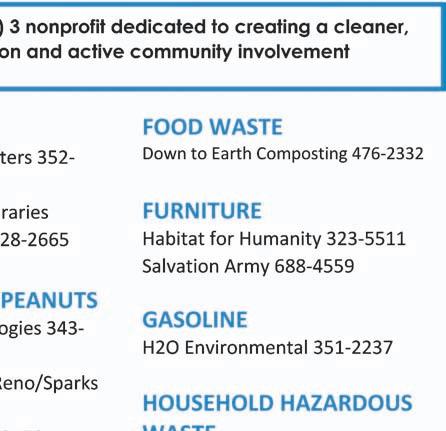




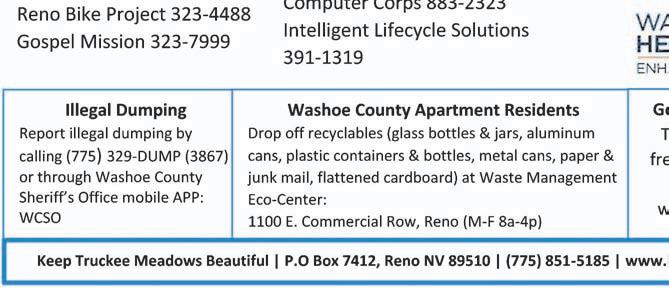
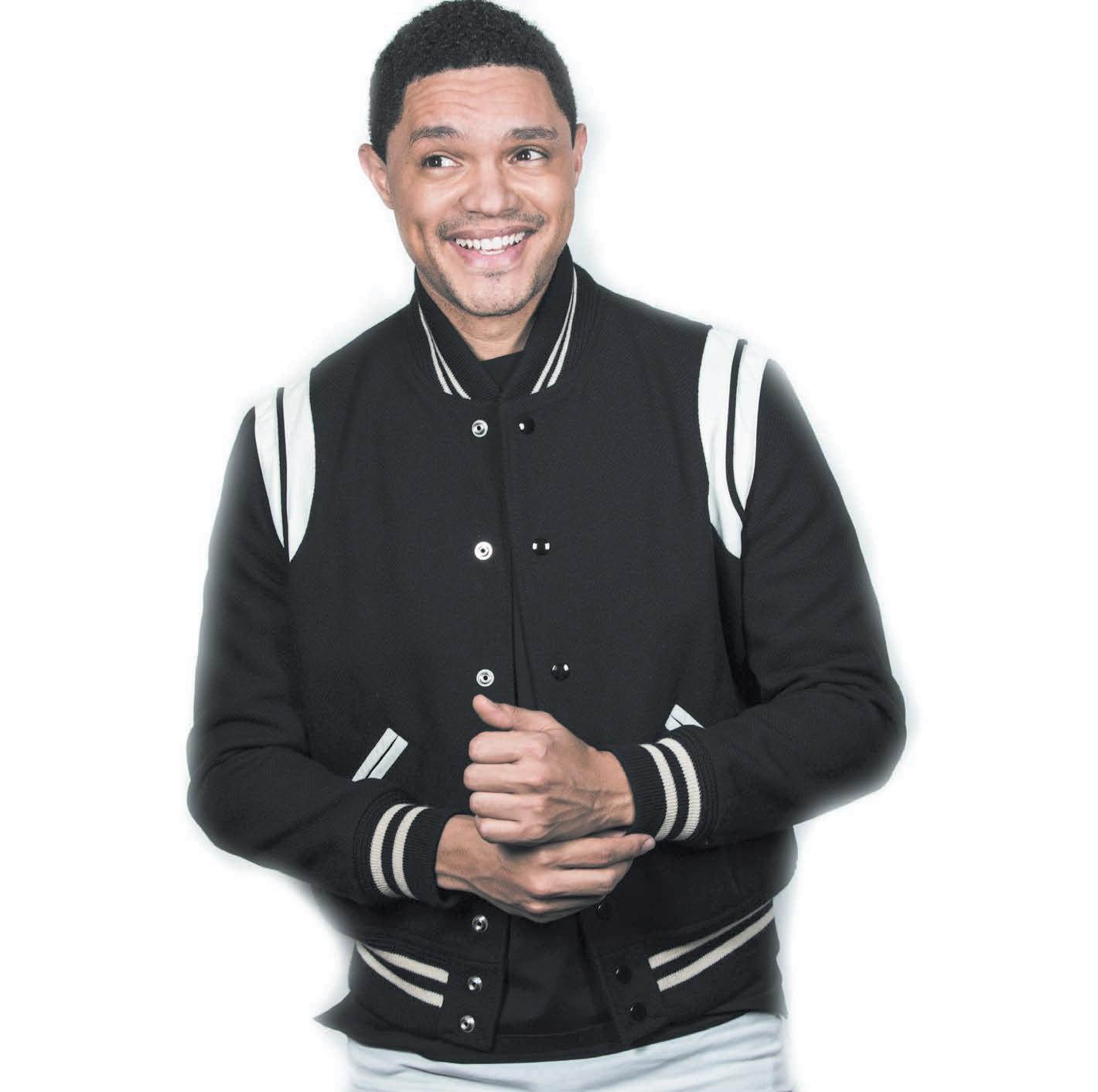
Daily special
by Brad Bynum bradb@newsreview.com
Comedian and The Daily Show host Trevor Noah weighs in on Trump, the Democratic debates, and his favorite kind of pie
Writer and comedian Trevor Noah has been the host of Comedy Central’s The Daily Show since 2015. In 2016, he published the bestselling book Born a Crime, about his childhood experiences growing up in South Africa. He has several standup specials, the most recent of which, Son of Patricia, is available on Netflix. He’ll perform at the Lake Tahoe Outdoor Arena on July 5.
What did you think of the Democratic debates?
It was purely what I think American voters need to be hearing about.
Because it helps people figure out who they want to support and why they want to support them, so for me, I thought it was really good.
There was some conflict. There was some tension, which is never a bad thing as long as people keep it within the scope of politics.
Who stood out to you?
On the first night, I think Elizabeth Warren did well. I mean, she just has her policies laid out. She knows what she wants to do. [Julián] Castro had a good showing. I still don’t think he’d win, but he had a good showing. I think on the second night, we really saw the powerhouses come out. Bernie [Sanders] was strong as always. [Pete] Buttigieg is fantastic at navigating difficult issues. And then, by far, the biggest breakout of all the debates was Kamala Harris. I think what connected with so many people is that it wasn’t contrived. She really had a moment of authenticity, where she just spoke from the heart and who she was as a person. It’s something that’s rare to see from politicians because a lot of the time they’re so focus-grouped and so practiced that we don’t get to see who they really are and their feelings. So that was a moment, I think, that struck a chord with everybody. I think Joe Biden didn’t come off that great, because, you know, he was very defensive. It seemed like it was a moment where he could have taken just a little bit of a breather and gone with a more humble angle in responding to Kamala who was saying, these polices affected my life, and I come from the world that you were writing laws about. So, we’ll see where it goes from here. But that was the first round of the debates—with 20 people.
It was a lot of people. They had to break it up into two nights, and even then it was difficult to keep track of everyone who was on stage.
Right. But at the same time, I think it’s good for the Democrats, because, unfortunately, America is really addicted to entertainment. And one thing that the Republican debates [in 2016] gave people was entertainment value, and when there’s entertainment, people tune in. And when people tune in, they’re more aware of what’s happening. So, in a weird way, having the 20 [candidates] and having the two nights is actually better, because now you have two nights to talk about policies, two nights to focus on Democrats and their ideas.
I watched the debates on Hulu, and on the Hulu page, it said, like, “season one, episode one” like it was a TV show. It is treated as entertainment. I think you’re in a position where you’re straddling that line, too. You’re commenting on current events on The Daily Show. It’s a comedy show, but so many people find out their news through you. Do you feel pressure to inform people?
No. I only feel pressure to put on a good show. For me, I only want to talk about those things. I don’t spend time with my friends or in my personal life talking much about nothingness. I’m not a big tabloid person. I’m not someone who spends my time talking about random stuff. I like to talk politics. I like to talk issues. I like to talk about what’s happening in the world. If anything, The Daily Show is an extension of the world that I exist in. So, the only pressure I have is to put on a good show. How do I engage with an audience? How do I keep people entertained? How do I make people laugh? And how do I try to spark the same thoughts and moments that I think trigger all good
conversation? And that’s all I’m trying to do on the show. … Everything that you do is a product of who you are. And who you are is going to shape what you believe in, and the two intertwine, and they affect each other, I think, equally in different ways. So, for me, I take whatever I need to take into either space, and then I go from there. But everything I do is an extension of who I am. I’m not trying to create a different persona on The Daily Show. I’m presenting a show, so there’s a certain energy and a vibe that I’ll have because I’m working within the limits of the time that I’ve been given and the medium. But when I’m on stage, it’s the same thing. I am who I am, and I perform accordingly. And I always try to make sure that the people who have taken their time or spent their money to come and support me, I give them the best show possible.
So, my kids are fans. I told them I was going to talk to you, so they gave me two questions to ask you. These are from my kids who are 12. That’s dope! The first question is, “What’s your favorite kind of pie?” My favorite kind of pie—hands down, apple pie. In fact, when I first moved to America, I gained too much weight because in South Africa, it’s not common that you just find apple pie. So my rule—my cheat thing in life was, if there’s an apple pie on the menu, I always order it. So, in South Africa that meant, like, one in every 20 times that I would eat out there would be apple pie. In America, I quickly learned it meant that at every single meal, I could consume apple pie. So I had to cut down. But that’s still easily my favorite pie. The second question that the kids asked me to ask you—they’re of the generation where they watch a lot of stuff on YouTube. And I think they think you’re a YouTuber. They see your show in segments. So, my stepdaughter said, “He’s got a lot of really funny videos about Trump, so ask him his personal opinion of Trump.”
That’s interesting. My personal opinion of Trump? I think Donald Trump is a simple yet complicated person. He’s a very smart entertainer who knows how to engage in the right triggers to get people to feel a certain way. I don’t think he’s a very good policymaker. I also think he’s someone who is very good at exploiting people’s hatred toward each other. And he knows how to mobilize that. All politicians have a different tool that they use, and, in many ways, the reason Obama won is that he figured out how to stimulate everybody’s hope and optimism. Donald Trump is very good at stoking people’s fear and divisiveness. So, that’s who he is as a person. And he believes in his cause. He genuinely believes in what he is doing and who he is doing it for. I don’t think he’s a very honest individual. He lies way more than most people I’ve ever come across in politics. But one thing he’s really good at doing is connecting with the emotions of the people who he’s supporting and representing. And I think that’s one thing that many politicians can learn from him—how to hone in on what people are feeling. … The weird thing about Donald Trump is, he’s the most dishonest authentic person you’ll ever meet. … I will always laugh at absurd politicians or people in power—even if those people are doing things that are negatively affecting the world that we live in. It doesn’t discount what’s happening, but for me it’s how I process what’s happening. Because without that laughter, what? I’m just going to exist in a space of panic the entire time? That’s not who I am as a human being. I believe in action. I believe in engagement. And most importantly, I believe in not losing yourself in whatever fight you’re engaged in or whatever cause you’re engaged in. Still, be who you are and maintain the same passion. That’s what I try and do every single day. So, when I process that information, I go, “Hey, man, Donald Trump is going to say a funny thing.” Those funny things that he says that don’t affect anybody, I can laugh at those things or those moments. I also think that sometimes making a person too serious gives them a certain level of gravitas that they don’t deserve. And I think it’s good to point out the moments of complete buffoonery that we see from our leaders. Otherwise, we very quickly slip into a place that many countries are in where everyone looks up to the leader like this complete supreme being, and I don’t think that’s healthy for any democracy. For me, any leader should be open to shots, and the person can take jokes. You can say, “Hey, this is what’s funny about this person, and these are the jokes that we can make about the person.” Because if we can’t do that, then you’re not living in a free society. ... With The Daily Show, I love how informed I get to be. I get to be in a job where I every day I’m learning. I’m learning about American policy, I’m learning about what’s happening around the world. I’m learning about issues. I’m learning about people. I’m eternally grateful, because those are things that I may not have been forced to engage in at the level that I am while hosting the show. If anything, I see everything as an opportunity to enjoy myself, and that’s what gives me energy every day.
That’s awesome. Thanks for the time.
Thank you so much. And say what’s up to the kids for me. I appreciate the questions. Ω
Trevor Noah performs at the Lake Tahoe Outdoor Arena at Harveys Lake Tahoe, 18 U.S. 50, Stateline, on July 5 at 8 p.m. For tickets or more information, visit apeconcerts.com/ events/trevor-noah-loud-clear-tour
/`Pla-stik/
Plastic is everywhere. From toothbrushes to yogurt cups, diapers to disposable razors and more; there is hardly a product out there today that isn’t made of plastic or wrapped in plastic. So what exactly is plastic and how is it made?
The hisTory
The word plastic is derived from the ancient Greek word plastikos, meaning “moldable.” The earliest uses of plastic date back 3,500 years ago. The Olmecs of Mexico used the sap from gum trees to create latex balls used in mesoamerican sports. In the 19th and 20th centuries, synthetic plastics were born from inventors like Alexander Parkes, who invented Celluloid and Leo Baekeland who invented Bakelite.
The impacT
Although plastic production didn’t take off until the 1950s, today’s global plastic production has reached 9.2 billion tons of plastic. Most of the plastic products made today end up in the trash. Single-use plastics constitute about 40% of all plastic waste. Plastic products can also end up in our environment as litter. Scientists predict that by the year 2050, plastic waste will outnumber fish in our oceans. Plastic doesn’t decompose, but instead breaks up into tiny pieces called microplastics. These microplastics are getting into our waterways and bioaccumulating in our ecosystems, damaging natural habitats, threatening wildlife, and polluting communities.
The soluTion
Simple steps lead to positive change! Join Keep Truckee Meadows Beautiful this Plastic Free July by reducing your reliance on plastic. You can start by bringing your own cup to Artown to refuse single-use plastic water bottles. Reduce plastic products you could not refuse by shopping bulk to avoid excess plastic found in packaging. Don’t forget to take your own reusable shopping bag to the grocery store. Finally, make sure you are recycling right. Only recycle plastic tubs, jars, and bottles and remember not to bag your recyclables on collection day. You can take your plastic bags back to a grocery store near you. Visit www.ktmb.org/ recycle for more information on proper disposal of unwanted items.

Source: National Geographic. Plastics 101. Producer/Narrator by Angeli Gabriel. Funded in part by the Washoe County Health District










